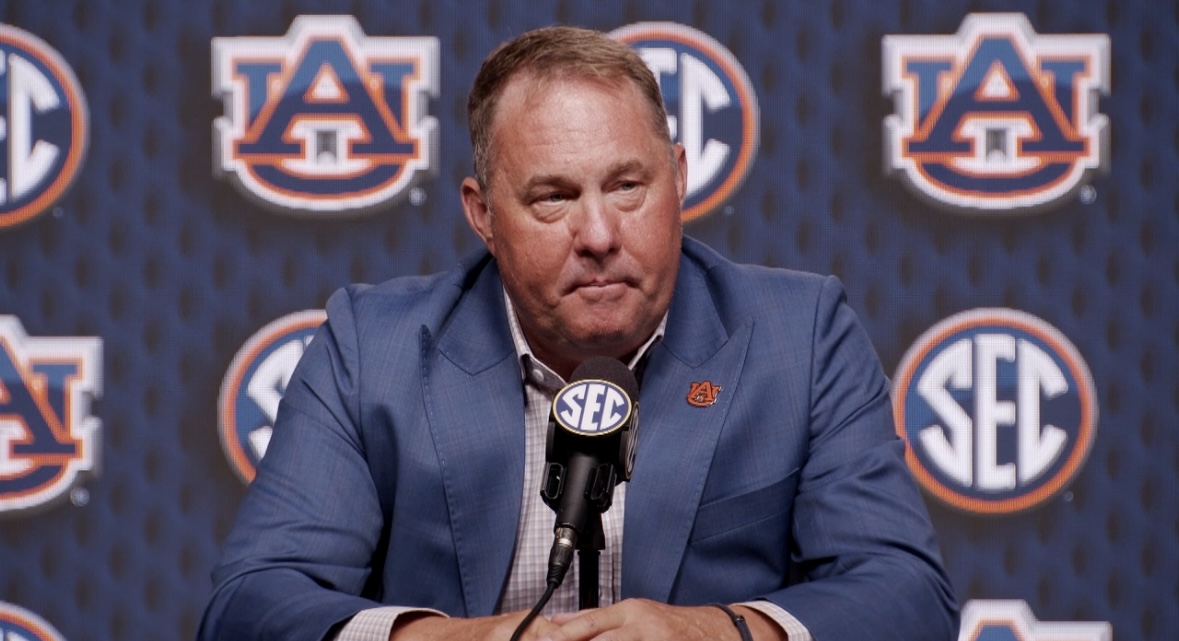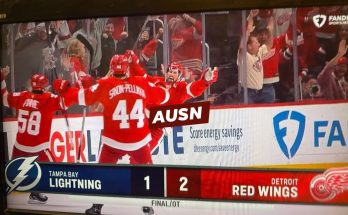Freeze says Auburn belongs in the 2025 playoff conversation, speaking with clear confidence, eager anticipation, and real pride in the program.
Freeze says Auburn belongs in the 2025 playoff conversation, speaking with clear confidence, eager anticipation, and real pride in the program. For a fan base that measures autumn in Iron Bowls, recruiting jolts, and that combustible mix of hope and heartbreak unique to the Plains, those words hit like a starter pistol. They are not a granite guarantee, but they are a coach’s public marker that trajectory, resources, and internal buy‑in are finally aligning in ways that could matter when selection committees and algorithmic models start stacking résumés two seasons from now. The statement also works as a cultural nudge: believe with me, build with me, and push with me, because Auburn has climbed from turbulence to national relevance before and can do it again in an era when the path to the postseason is wider—yet no less demanding—than ever.
Context shapes the ambition. The College Football Playoff’s expansion to a 12‑team field beginning with the 2024 season changes the calculus for every ambitious program living just outside perennial blue‑blood status. No longer is the sport a four‑seat table where one untimely loss sends even high‑ceiling teams to the sugar‑coated consolation lane. Depth, staying power, and late‑season surges matter more. A strong SEC record combined with quality nonconference work, competitive losses to top powers, and the data‑driven efficiency metrics selection committees increasingly study can now put you squarely “in the conversation.” Freeze’s assertion is really a goal statement wrapped in belief: build enough trench depth, stabilize quarterback play, stack recruiting wins, harness the portal strategically, and Auburn can be one of those teams forcing analysts to keep the Tigers highlighted on their boards as December approaches in 2025.
History is Auburn’s wind at its back. This is a program that claimed national championships in 1957 and 2010, played for the title after the 2013 season, and produced Heisman winners in Bo Jackson and Cam Newton—names that still glow for recruits who weren’t born when those legends stiff‑armed history. The “Kick Six” lives forever in rivalry mythology; young prospects see it on loop and absorb, at a gut level, that something electric can happen here. Tradition is not a trophy cabinet; it’s a recruiting supercharger and a cultural memory bank that convinces players their peak moments can ripple through college football. When Freeze speaks proudly about being part of Auburn, he is plugging into that battery.
Translating tradition into 2025 relevance begins on the offensive line. Freeze has long emphasized frame length, foot quickness, and interior depth to run the tempo‑shifting, RPO‑layered, play‑action‑threat offenses he prefers. Auburn has pushed hard—through high school pipelines, junior college scouting, and the transfer portal—to thicken the two‑deep with bodies that can survive an SEC gauntlet. Development cycles matter: redshirt tackles becoming playable, guards cross‑training at center, and rotation snaps spread early so that November attrition does not force schematic retreat. If Auburn’s front can consistently create second‑and‑manageable situations, the rest of the offense unlocks.
Quarterback stability is the next pillar. Freeze’s best teams elsewhere featured passers who processed leverage quickly, punished soft boxes in the run‑pass option game, and still hit vertical shots when safeties crept. Auburn’s route to the 2025 conversation could flow through a veteran who grows through 2024, a portal arrival who instantly elevates the room, or a blue‑chip signee who accelerates the learning curve. Whichever scenario lands, Auburn must end the scramble‑year carousel of short‑term fixes. System comfort, chemistry with receivers, and command at the line—checking protections, speeding tempo, stealing cheap yards—are what flip tight SEC games decided by four snaps.
Defense remains Auburn’s emotional fingerprint, and it must sharpen in a reconfigured SEC that now includes Texas and Oklahoma. Being “in it” for 2025 means creating havoc: tackles for loss, quarterback stress, tipped‑ball turnovers, situational red‑zone resistance. Freeze and his defensive staff have prioritized length on the edge, second‑level twitch that can blitz or scrape, and hybrid defensive backs able to survive motion, bunch looks, and hurry‑up pressures the league’s top coordinators spam by habit. Depth across the front seven is nonnegotiable; rotating live bodies keeps late‑season juice. Add a couple of game‑flipping pass rushers and Auburn becomes the kind of matchup no contender wants in November.
Recruiting momentum feeds every ambition. Geographically, Auburn sits amid a five‑hour recruiting superhighway touching elite talent in Alabama, Georgia, and Florida. Layer in modern air travel and digital branding and the Tigers can cast a national net when a position of need emerges. Name, image, and likeness realities mean relationships and credibility are now currency; players want transparency about support structures, post‑college branding help, and how local collectives engage them responsibly. Freeze’s public optimism doubles as a recruiting message: come help push Auburn over the top; the door to the playoff is open wider than before, and you can run through it here.
Schedules shape narratives, and Auburn’s 2025 arc will travel through a newly aligned SEC rotation that scrambles old East‑West assumptions. Exposure to Texas’s vertical passing DNA one week and a bruising, clock‑choking opponent the next demands adaptable game plans and bodies that travel. Freeze’s reputation as a tinkerer—willing to script wrinkles, change tempo families, and exploit opponent tendencies—gains value when opponents vary wildly in style. By the time 2025 rolls around, Auburn will have a data bank from earlier meetings with the league’s newcomers; self‑scouting how the roster handled travel, bye‑week placement, and matchup stressors becomes the hidden work that turns seven wins into ten.
Roster retention is the quiet hinge. In the transfer‑portal era, keeping developmental sophomores from bolting after depth‑chart disappointments can be worth as much as landing a headline transfer. Freeze talks frequently about relational coaching: players who feel heard, developed, and fairly evaluated tend to stay, and staying compounds experience in the two‑deep. For 2025 hopes to hold, Auburn needs veteran snaps across special teams, rotational defensive roles, and situational offensive packages. Programs that cycle continuity into culture usually outperform raw recruiting rankings when injuries hit.
Culture is Auburn’s differentiator. Faith conversations, community outreach, and deeply rooted rituals—rolling Toomer’s Corner, the pregame eagle flight, the sense that the entire town leans in together—create connective tissue across classes and recruiting cycles. Freeze, whose career has included public highs and lows, leans into accountability and second‑chance themes that resonate with families deciding where to entrust a son. Pride in place becomes competitive fuel when the season grinds; teams bonded to something larger than themselves tend to practice through fatigue and respond faster after gut‑punch losses.
So what does “in the playoff conversation” actually require by the 2025 season? Not necessarily a preseason top‑five ranking, and not even an SEC title—though either would help. In a 12‑team format, a double‑digit‑win Auburn with elite strength of schedule, narrow losses to top opponents, and strong efficiency metrics (think explosive‑play rate differential, success rate balance, red‑zone touchdown percentage, and opponent‑adjusted defensive havoc) absolutely lives on the selection short list. Media chatter matters less than résumé layers: beat two ranked teams, avoid bad losses, finish healthy, and stack data that computers respect. Auburn’s staff will study how the committee evaluates year one of the expanded playoff in 2024 to reverse‑engineer the thresholds they must hit in 2025.
Skeptics, of course, can stack counterpoints: the SEC’s depth, inevitable injuries, the volatility of portal‑heavy rosters, the difficulty of synchronizing NIL promises with locker‑room harmony, the sheer math of needing to be among the sport’s dozen best when everyone else is also scaling up. They are not wrong. Freeze’s response is operational layering—nutrition discipline, academic accountability, film literacy, mental‑performance coaching—so that Auburn bends without splintering when adversity hits. Incremental daily wins accumulate into the resilience you only notice when a November road game flips on a fourth‑quarter goal‑line stand.
And ultimately that is why the tone matters as much as the claim. Confidence without arrogance, anticipation without naiveté, pride without complacency—broadcast those through a staff, wire them into player leadership councils, let them echo in donor rooms, and the mood around the program changes from conditional hope to collective intent. The Plains have already witnessed lightning‑strike seasons that shocked the sport; Freeze is challenging Auburn to harness that electricity and power a sustained climb. If development holds, the roster stays healthy enough, recruiting sticks, and a few pivotal bounces break Auburn’s way, then when analysts fire up their playoff projection models late in the 2025 campaign, they will have to type “Auburn” and keep the Tigers firmly in the frame. That is the vision behind the confidence—and the invitation to everyone who bleeds orange and blue to push until it becomes real.



